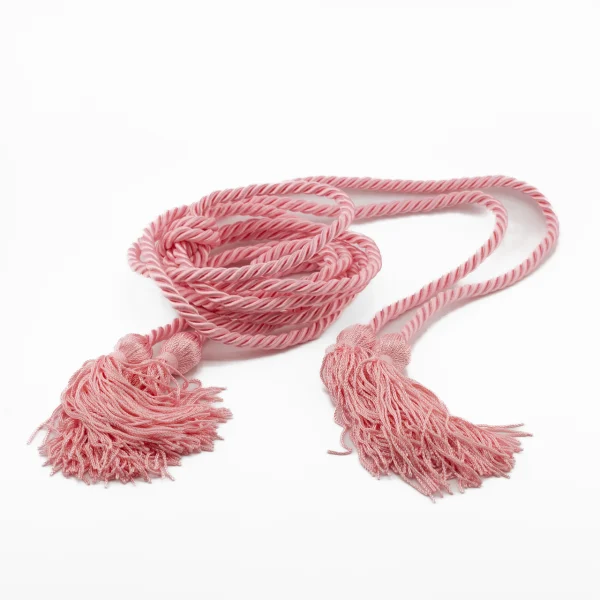As we approach the month of June, graduation season is nearly upon us. Green Level seniors are wrapping up their time in high school: turning in their last assignments, signing yearbooks, and calculating how many classes they can skip without sacrificing their exam exemptions. While they end this chapter of their lives, the glorious day they will walk across that stage is inevitably on the brain. Seniors are now gathering their graduation apparel, including the standard cap, gown, and tassel. However, at a school with a competitive academic culture such as Green Level, most students also collect graduation cords and other decorative pieces.
At many schools, each individual club, sport, AP class, and other accolade has its own designated cord. In contrast, at Green Level High, the number of graduation cords that students can earn is relatively limited. Green Level administration has decreed one green cord to represent any and all school clubs that a student may have participated in. Honor societies, though, may each have their own unique cords for seniors to adorn. For example, graduating members of the Tri-M Music Honor Society will receive light pink cords, and those of the Spanish Honor Society will receive red and gold cords. Students may also receive small pins from these honor societies that they can opt to wear as well. While few students can maintain more than two memberships in different honor societies, and many students devote their time to very involved clubs such as DECA or No Woman No Girl, it’s unlikely that any Green Level Senior will have more than about three cords to wear.

Additionally, all graduating Green Level seniors will be wearing stoles with the school’s emblem on the right side. Depending on the student’s weighted GPA, the student may have Cum Laude, Magna Cum Laude, Summa Cum Laude, or a blank space on the left side of their stole. Typically in Wake County, Cum Laude is for students with a GPA of 3.75 to 3.99, Magna Cum Laude is 4.0 to 4.24, and Summa Cum Laude is for 4.25 or higher. A weighted GPA lower than 3.75 will not earn an honor distinction.
Another decorative piece seen at Green Level’s graduation will be medallions for students who are a part of the National Honor Society, in addition to their NHS graduation cords. This is usually unique to NHS, as it is seen as the most coveted honor society that a high school student can be a member of. Some other honor societies at our school are also able to adorn medals, such as the National Honor Society of Dance Arts, but many haven’t yet decided whether they will or not. However, I’ve been informed by a GLHS NHS officer that the school has told them specifically that they may not wear the traditional NHS pendant stole that many NHS members wear along with their cords and medallion.

Green Level seems to be choosing a happy medium between the cordless/stoleless graduations many schools have opted for, and the superfluous “everything’s a cord” ceremonies. Whether for simplicity’s sake or inclusion, it is hard to tell. Over something that seems relatively trivial, there has been much debate across the country. Some argue that students deserve recognition for their achievements, and some claim that these cords create a culture of unhealthy competition and exclusion.
In my eyes, students deserve to showcase their accomplishments during the graduation ceremony without feeling responsible for the feelings of students who have not worked as hard. Cords, special stoles, pins, and medals serve to represent extra accolades on top of the student’s primary accomplishment of graduating high school. They should be allowed to carry on this longstanding graduation tradition on one of the proudest days of their life without having to tone it down so that everyone else feels just as good about themselves. Students who didn’t go the extra mile by joining clubs, honor societies, getting above average grades, etcetera should still feel proud of themselves for their graduating, without feeling entitled to the rewards that other students earn for their additional achievements.
In reality, every student walking across that stage is graduating just the same. To insinuate that these additional displays cause division or exclusion is outlandish and unfair to the students who want to showcase their accomplishments and feel unified with other members of their clubs/honor societies. Green Level’s choice to enumerate one green cord to every club in the school, no matter how many a student has participated in, seems to be leaning into this philosophy of eliminating exclusivity. Though, it could also be seen as valuing the meaning of cords and other pieces more heavily, and believing that these things shouldn’t be handed out like golden star stickers for every little thing. In this vein, it is fair to bring up that not every club at this school is centered around academics, or involves as much commitment as honor societies, but some clubs are indeed both of these things. This one green cord suggests that Green Level views these clubs as weighted just the same, that the Taylor Swift Club and Future Business Leaders of America are created equal in merit.
While the “participation trophy” culture of it all is excessive in some cases, like some high schools that hand out cords for taking honors and AP classes or filling out the FAFSA, I feel that this is more reasonable than going without cords at all. Understandably, schools that aren’t as competitive as Green Level want to reward students for all accomplishments, no matter how minute some perceive them to be. However, the schools that have opted for no cords or any other special attire are taking the fun and individuality out of graduation garb. Students can’t showcase the societies and clubs that they spent so much time running and participating in.
I feel that Green Level is a bit guilty of this fun-spongeing with their one club cord decision, and that they should have deemed some clubs as earning their own cord. It would have been more fair had they assessed the clubs based on national recognition, academic merit, and commitment level, and made decisions based on whether that club should receive its own honor. I would even go so far as to say it would be reasonable to deem some especially involved classes as worthy of their own cord, such as arts classes, the school newspaper, the yearbook, PEPI, and more. If there is significant participation in class-related activities outside of class, like performances or events, this should be recognized during graduation.
All of that said, I can say I am glad that Green Level isn’t giving out cords for things like showing up to school, as this would definitely take the significance out of cords due to our student body’s high standards. While I can understand Green Level’s simplistic approach to cords and other emblems for a few reasons, I think that more could have been done to recognize seniors for their individual accomplishments. I don’t think someone heavily involved in the Red Cross Club or the Black Student Union should only have one cord at graduation. I also don’t think someone who was a prominent student-athlete or fine arts participant should be cordless. While none of this emblematic discourse is that big of a deal at the end of the day, I can’t say I wouldn’t be bummed out if my school abandoned this tradition, especially if I was someone who worked extremely hard in high school.
Graduation cords and emblems are the opposite of divisive; they unite those who have shared a common passion and commitment throughout their time in high school, allow students to showcase their achievements to their loved ones, and give students a tangible representation of what they should be proud of. I’m glad Green Level is recognizing this to an extent, and hope that for future graduations, there will be more open-mindedness regarding what school activities qualify for a special honor.








